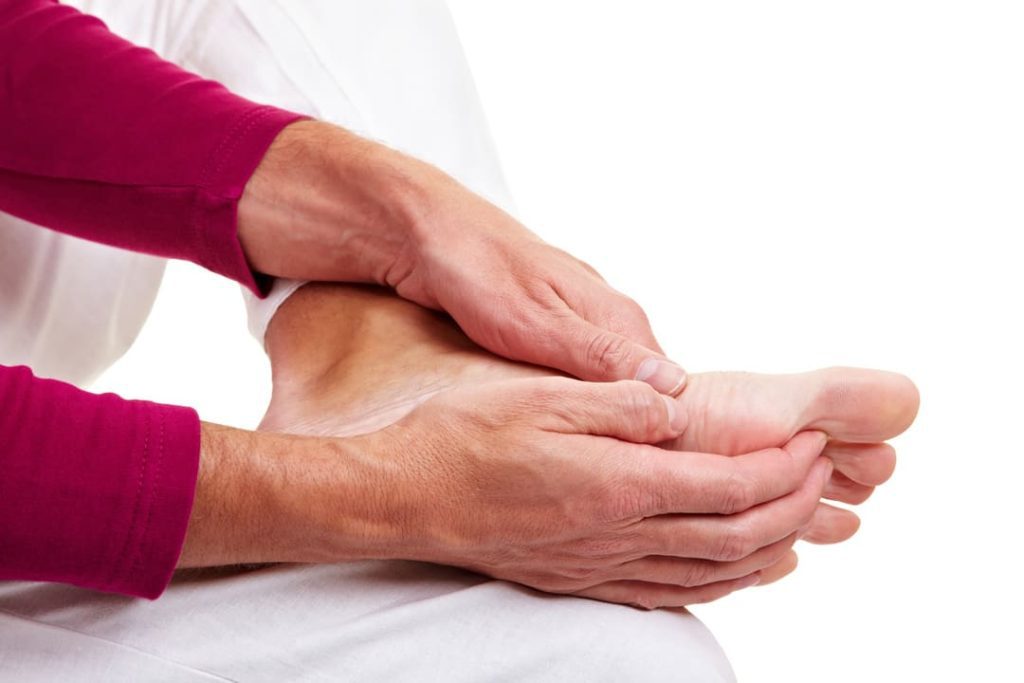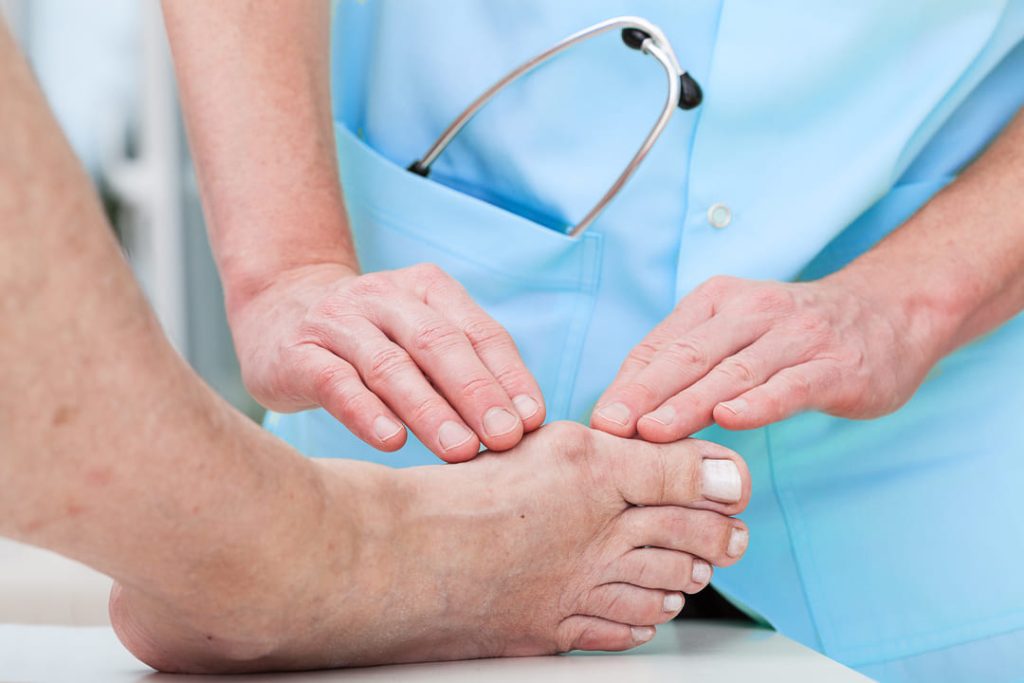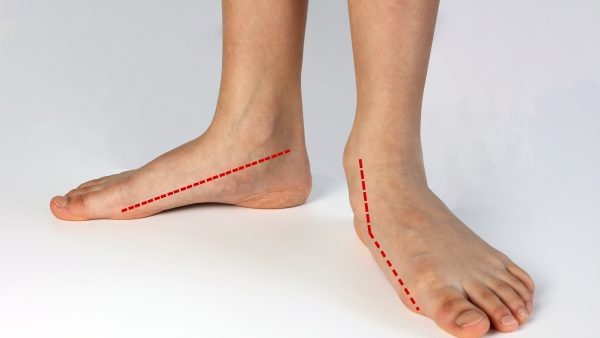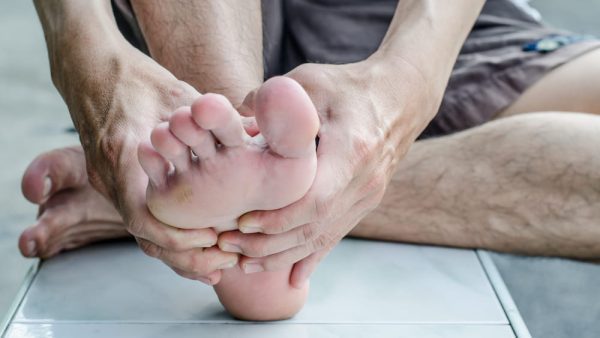Looking for Expert-Level VA Claim Answers?📱Call Us Now! 737-295-2226
It’s known that foot pain is common among veterans.
But what foot problems qualify for VA disability?
In this post, we’ll cover 8 common foot problems in veterans and reveal how to get the VA disability compensation and benefits you deserve. Let’s get to it!
Table of Contents

Foot Problems in Veterans
You spent countless hours on the frontlines walking, running, carrying heavy loads; the list goes on. And now you’re paying the price.
Living with foot pain can significantly affect your quality of life, but the good news is you may be entitled to foot pain VA disability compensation for your condition.
What Foot Problems Qualify for VA Disability?
Foot conditions eligible for VA disability include flatfoot, plantar fasciitis, hammer toe, and several other foot injuries of varying severity.
The bilateral factor rule may increase your rating potential if service-connected conditions impact both feet.
These painful foot conditions can affect mobility and quality of life, potentially warranting VA disability benefits and compensation.
Foot Pain VA Ratings
Generally, the VA rates foot problems under the Schedule of Ratings for the Musculoskeletal System, depending on your specific condition.
For example, the VA rates plantar fasciitis at 10%, 20%, or 30%, depending on the severity, frequency, and duration of your symptoms.

How to Service Connect Foot Problems
If you suffer from a foot problem due to military service, you must prove a service connection when filing for foot pain VA disability.
To receive VA disability for foot problems, you must meet the following requirements for service connection:
- A current diagnosis of a foot problem
- An in-service event, injury, illness, or aggravation
- A medical nexus (i.e., link) between your current diagnosis and your in-service event, injury, or illness
How to File a VA Claim for Foot Problems
You can file a VA claim for foot problems using the following five steps:
- Gather Documentation: Collect medical records showing current diagnosis, test results, service records, and other evidence, such as a Medical Nexus Letter or Independent Medical Opinion (IMO) linking your foot problems to your military service.
- Complete VA Form 21-526EZ: This form is for applying for VA disability compensation. You should include details about your symptoms and how they affect your daily life.
- Submit Your Foot Problem VA Claim: Send the completed form and supporting documents to the VA regional office handling your claim. You can submit it online through the VA website, by mail, or in person.
- Undergo Examinations: The VA might schedule you for medical examinations to evaluate the extent of your foot problems.
- Await the Decision: The VA will review your claim, considering the evidence provided.
The VA will notify you of their decision regarding your eligibility for foot pain VA disability, including VA benefits and compensation.
8 Common Conditions for Foot Pain VA Disability
Plantar Fasciitis
Plantar fasciitis is common in veterans due to carrying heavy loads and extended periods of walking and standing.
You may be eligible for a plantar fasciitis VA disability rating if you have a medical diagnosis and can prove your military service caused your condition. The highest VA rating for plantar fasciitis is 30%.
| Diagnostic Code 5269, Plantar Fasciitis: | VA Rating |
| No relief from both non-surgical and surgical treatment, bilateral | 30% |
| No relief from both non-surgical and surgical treatment, unilateral | 20% |
| Otherwise, unilateral or bilateral | 10% |
| Note (1): With actual loss of use of the foot, rate 40 percent | |
| Note (2): If a veteran has been recommended for surgical intervention but is not a surgical candidate, evaluate under the 20 percent or 30 percent criteria, whichever is applicable |
Flat Feet
If you experienced an injury to your ankle or foot while on active duty, you’re more at risk for developing flatfoot (Pes Planus), causing the arches on your feet to flatten when you put pressure on them.
While sometimes the condition isn’t painful, many veterans experience discomfort in the heel or arch area. VA disability for flat feet ranges between 0% and 50%, with interim breaks at 10%, 20%, and 30%.
| Diagnostic Code 5276, Flatfoot, acquired: | Bilateral VA Rating | Unilateral VA Rating |
| Pronounced; marked pronation, extreme tenderness of plantar surfaces of the feet, marked inward displacement, and severe spasm of the tendo achillis on manipulation, not improved by orthopedic shoes or appliances | 50% | 30% |
| Severe; objective evidence of marked deformity (pronation, abduction, etc.), pain on manipulation and use accentuated, indication of swelling on use, characteristic callosities: | 30% | 20% |
| Moderate; weight-bearing line over or medial to great toe, inward bowing of the tendo achillis, pain on manipulation and use of the feet, bilateral or unilateral | 10% | |
| Mild; symptoms relieved by built-up shoe or arch support | 0% |
Weak Foot
Weak foot occurs when moving the foot and muscles are not as strong as they should be. Generally, it is combined with another rating and can’t be rated less than 10%.
| Diagnostic Code 5277, Weak foot, bilateral: | VA Rating |
| A symptomatic condition secondary to many constitutional conditions, characterized by atrophy of the musculature, disturbed circulation, and weakness: | |
| Rate the underlying condition, minimum rating | 10% |
Clawfoot
The VA rates clawfoot under diagnostic code 5278, with ratings ranging from 0% to 50%, depending on the severity of the deformity, whether one or both feet are affected, tenderness of your toes, and the presence of painful calluses.
| Diagnostic Code 5278, Clawfoot (pes cavus), acquired: | Bilateral VA Rating | Unilateral VA Rating |
| Marked contraction of plantar fascia with dropped forefoot, all toes hammer toes, very painful callosities, marked varus deformity: | 50% | 30% |
| All toes tending to dorsiflexion, limitation of dorsiflexion at ankle to right angle, shortened plantar fascia, and marked tenderness under metatarsal heads: | 30% | 20% |
| Great toe dorsiflexed, some limitation of dorsiflexion at ankle, definite tenderness under metatarsal heads: | 10% | 10% |
Metatarsalgia
You may develop metatarsalgia from carrying heavy equipment, running, or jumping while on active duty. The painful condition causes aching, burning, and sharp pain in the ball of your foot.
The only VA rating for metatarsalgia is 10%, regardless of whether it is unilateral or bilateral. However, you can combine a metatarsalgia VA rating with other service-connected disabilities to receive a higher VA rating.
| Diagnostic Code 5279, Metatarsalgia | VA Rating |
| Anterior (Morton’s disease), unilateral, or bilateral | 10% |
Hallux Valgus (Bunions)
Hallux valgus is the technical term for bunions, commonly caused by recurrent pressure on your big toe joint.
There are two categories for hallux valgus, both of which are rated at 10%.
| Diagnostic Code 5280, Hallux valgus, unilateral: | VA Rating |
| Operated with resection of metatarsal head | 10% |
| Severe, if equivalent to amputation of great toe | 10% |
Hallux Rigidus
If you wear shoes that don’t fit properly or experience overuse of the metatarsophalangeal joints in your feet, you’re more likely to develop hallux rigidus (stiff big toe).
The VA rates hallux rigidus the same as hallux valgus, with a maximum rating of 10% if the condition is present in one foot.
| Diagnostic Code 5281, Hallux rigidus, unilateral severe: | VA Rating |
| Rate as hallux valgus, severe. | (10%) |
| Note: Not to be combined with claw foot ratings. |
Hammer Toe
You may be eligible for a VA rating for hammer toe if you experience the condition in all your toes without claw foot. The highest VA rating for hammer toe is 10%.
| Diagnostic Code 5282, Hammer toe: | VA Rating |
| All toes, unilateral without claw foot | 10% |
| Single toes | 0% |
Other Foot Injuries
If you have a foot injury not specific to any condition, you may still qualify for VA disability under diagnostic code 5284.
The VA rates foot injuries at 10%, 20%, or 30%, depending on the severity, frequency, and duration of symptoms. In addition, if your injury results in the actual loss of use of your foot, you will receive a 40% VA rating.
TDIU and Foot Problems
If your foot problem prevents you from obtaining substantially gainful employment, you may be eligible for total disability based on individual employability (TDIU). If you qualify for TDIU, you will receive a VA rating of 100%.
You must meet the following requirements to receive TDIU:
- You have at least one service-connected disability rated at least 60% OR
- You have two or more service-connected disabilities, with one condition rated at least 40% and a combined rating of at least 70%
While there are no foot problem ratings over 60%, you may be eligible for additional disability if your condition causes a secondary condition.
For example, plantar fasciitis can affect your gait, potentially leading to hip and knee problems.
NEED MORE ASSISTANCE?
Most veterans are underrated for their disabilities and, therefore, not getting their due compensation. At VA Claims Insider, we educate you on how to take control of the claims process so you may get the rating and compensation you’re owed by law. If you’ve filed your VA disability claim and have been denied or have received a low rating—or you’re unsure how to get started—reach out to us!
Our process takes the guesswork out of filing a VA disability claim and supports you in building a fully developed claim (FDC)—so you may increase your rating FAST! Take advantage of a VA Claim Discovery Call. Learn what you’ve been missing—so you can FINALLY get the disability rating and compensation YOU DESERVE!
FAQs
What Foot Problems Qualify for VA Disability?
Several foot problems could qualify you for foot pain VA disability, including:
- Plantar fasciitis
- Flat feet (pes planus)
- Achilles tendonitis or rupture
- Hammer toe
- Heel spurs
- Bunions (hallux valgus)
- Chronic or severe fungal infections (e.g., athlete’s foot) causing functional impairment
- Metatarsalgia
- Neuropathy (nerve damage) affecting the foot
- Fractures or stress fractures of the foot or ankle
- Tarsal tunnel syndrome
- Arthritis of the foot or ankle
- Sever’s disease (calcaneal apophysitis)
- Charcot foot
- Morton’s neuroma
- Osteochondritis dissecans
- Ligamentous injuries (e.g., sprains)
- Tendonitis or tendinosis of the foot or ankle
- Post-traumatic arthritis of the foot or ankle
- Peripheral vascular disease affecting the foot
What is the VA disability rating for foot problems?
VA disability ratings vary between 0% and 50% for foot problems, depending on the severity of your condition and whether it affects one or both feet.
What is the highest VA disability rating for foot problems?
The highest VA rating for foot problems is 50%.
Are corns and calluses a VA disability?
Yes, you may be eligible for a VA disability rating for corns and calluses if you can prove your military service caused your condition. Corns and calluses are frequently caused by claw feet, which you can find under the Schedule of Ratings for the Musculoskeletal System.
How does the VA rate athlete’s foot?
The VA rates athlete’s foot (tinea pedis) at 0%, 10%, 30%, and 60% under the General Rating Formula for the Skin. To determine eligibility for athlete’s foot VA disability, you must prove your military service caused your condition.
Author

Kelly Olone
Kelly Olone is a military spouse who earned her degree in Psychology from Florida International University. After working in the non-profit sector for several years, she turned to her passion for writing. She aims to contribute to a better understanding of the valuable benefits that veterans deserve. As a mom, Kelly navigates the delicate balance between deadlines and bedtime stories with finesse.



